Samsung Glasses: Rumors and leaks about Samsung's XR headset
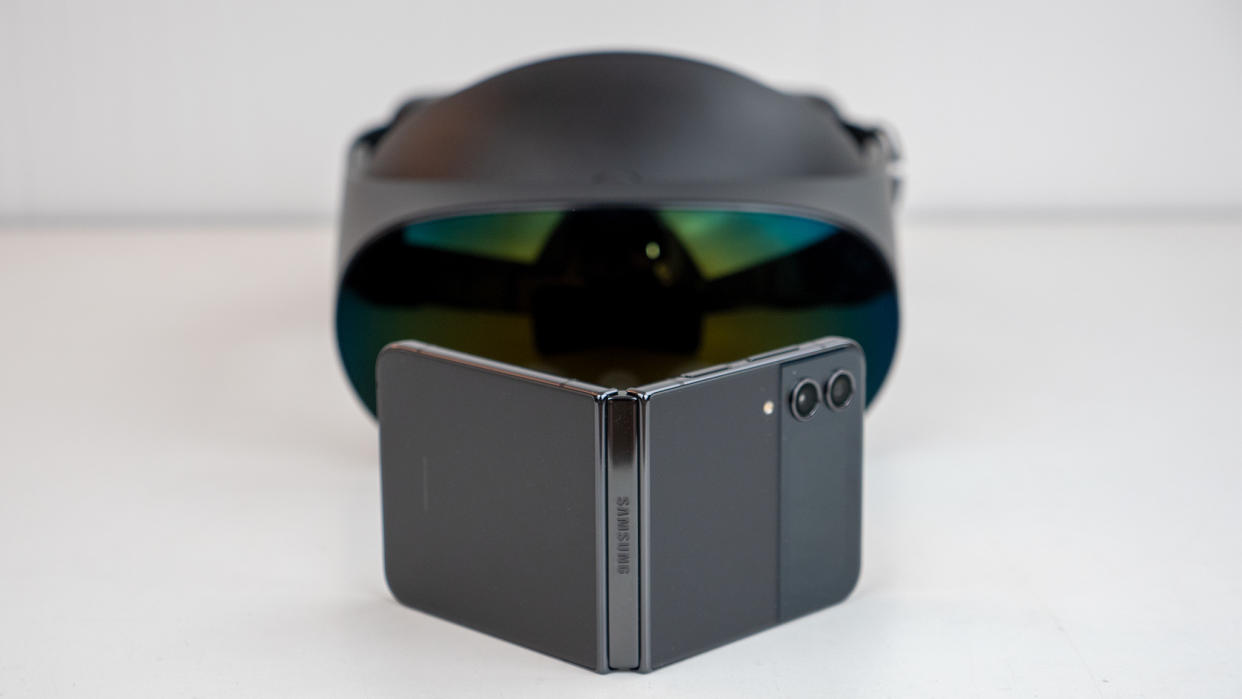
We've known for some time that Samsung is developing an XR headset. It wants a mixed-reality device to challenge the Apple Vision Pro, even delaying its old XR prototype after seeing Apple's announcement to give it a competitive advantage. And now, thanks to a recent Samsung trademark, we may know its name: Samsung Glasses.
We don't know for certain if the Samsung Glasses trademark refers to its headset or another prototype. Samsung could be developing AR glasses, or smart glasses like Meta's Ray-Bans. But we've heard no leaks about these, while we've heard plenty about Samsung's mixed-reality plans.
Whatever it's called, we know when the Samsung XR headset is supposed to launch, what kind of hardware it could use, and what software tricks Google might be planning. Here's everything we know about Samsung Glasses, its mixed-reality headset.
Samsung Glasses: Launch and pricing rumors
After Apple announced its Vision Pro in June 2023, Samsung allegedly sent an internal memo to employees stating, "We decided to review all internal specifications and performance, such as the design and panel of the new XR product." Essentially, the Apple Vision Pro spooked Samsung into delaying its XR headset into "mid-2024" for a major redesign.
Eventually, their internal XR launch target shifted to December 2024. Several sources and leakers have confirmed this date, as Samsung has apparently told XR developers to try and finish their mixed-reality apps by this month.
Samsung could push its headset out again, but the report also indicates that the company only plans to manufacture 30,000 headsets, compared to Apple's 400,000 Vision Pros. With that conservative goal, the company shouldn't have too much trouble delivering enough Samsung Glasses in a year before ramping up with future prototypes.
As for pricing, we learned from a Korean report about a Meta-LG partnership for the Quest Pro 2 that both Meta and Samsung hope to sell their next high-end headsets for about $2,000, well below the $3,500 Apple Vision Pro. This report may be analyst speculation rather than certainty, but it's certainly likely that Samsung will try to undercut Apple while still targeting a premium price point.
Samsung Glasses: Design
The above tweet shows an alleged leaked prototype of the Samsung XR headset before the company scrapped it. One thing's clear: it doesn't look like "glasses" at all. But as a prototype, it's likely that it wouldn't have been the official final appearance of Samsung's headset.
What's still unclear is whether they'll have a similar look to the Apple Vision Pro or Meta Quest Pro — both of which are proper "glasses" designed for XR passthrough — or have a solid front and passthrough that's fully dependent upon RGB cameras, like the Quest 3. The prototype points to the latter, but a premium XR headset (or the Samsung Glasses name) would most likely need to have a more stylish, see-through appearance.
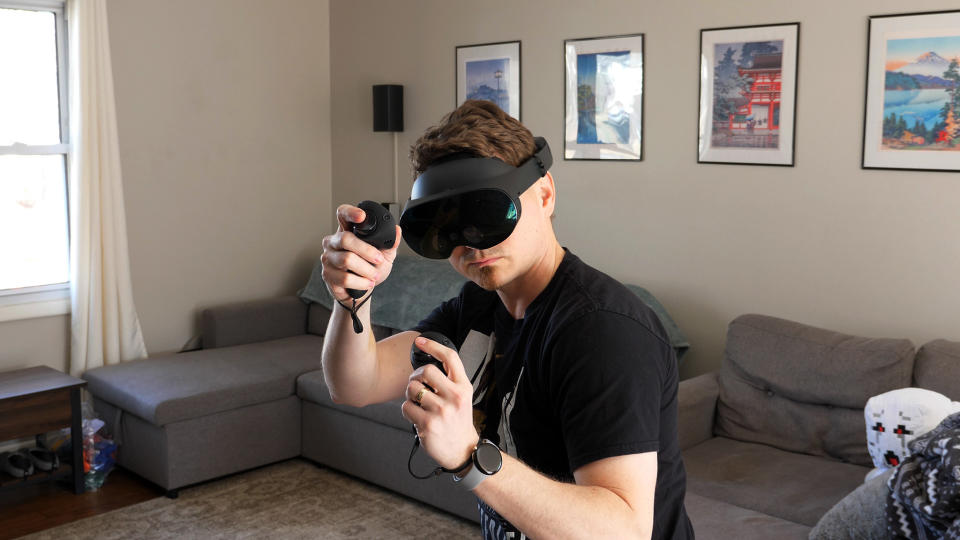
Allegedly, Samsung's original prototype had OLED microdisplays, pancake lenses, dual-RGB cameras with a depth sensor for passthrough, internal eye-tracking cameras, no controllers, and a rear-mounted battery.
Even if Samsung went back to the drawing board with its new prototype to make it more powerful, it's likely that some of these design choices would carry over. Some of its choices make us optimistic: the pancake lenses and rear battery pack would make it well-balanced on your head without needing an external battery pack like the Vision Pro.
Samsung Glasses: Specs and performance
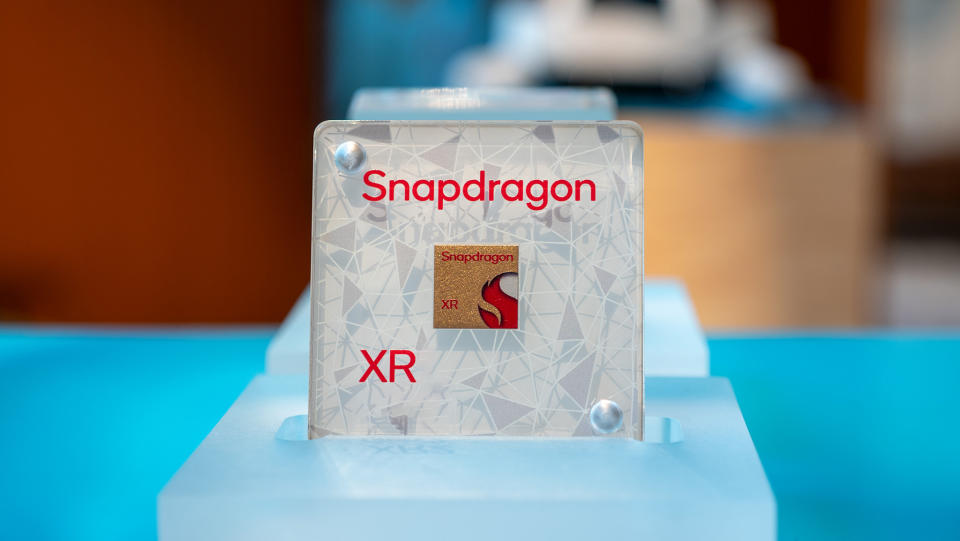
We already mentioned Samsung's plans for its first XR prototype, which allegedly would have used the notorious Exynos 2200 chip found in the international Galaxy S22 series. But it reportedly scrapped those plans after seeing Apple's headset, which will use a laptop-quality M2 chip and a separate R1 chip for cameras and sensors. It seems Samsung realized it needed more power than a phone chipset could deliver, in other words.
It's now working on a new design, according to a Business Insider report on Google's current XR plans. Google has access to Samsung's headset in order to develop software for it; it allegedly calls the headset "Project Moohan." Somewhat worryingly, Google employees supposedly told BI that they were "skeptical" Samsung could redesign its headset quickly enough to compete with Apple by its 2024 deadline.
Plus, because Google has its own hardware aspirations, Samsung demanded this Project Moohan team not speak to any other Google XR teams, "for fear they might build a competing product based on that information." It's clear that Samsung is being very secretive about its prototype, and also that it may not be finished yet.
Samsung is reportedly changing up the design and could use a chip more powerful than the one in the Quest 3.
Despite all of that uncertainty, there's one thing we do know: Qualcomm plans to release a new XR chip in early 2024 that's more powerful than the Snapdragon XR2 Gen 2 housed in the Meta Quest 3. And we suspect Samsung may use that chip to compete with the Apple Vision Pro, instead of Exynos hardware.
Qualcomm could theoretically build this new chip off of the Snapdragon 8 Gen 3, but we suspect instead that it'll use a variation of the Snapdragon X Elite, with its 12-core Oryon CPU that hits 3.8GHz, or up to 4.3GHz when boosted, along with a GPU with 4.6 TFLOPS. These stats could easily compete with what the Vision Pro's M2 brings to the table.
Otherwise, the only concrete Samsung Glasses spec we've heard is that it'll allegedly use a 3,000-dpi display, according to tipster @Tech_Reve. We probably won't know more for some time.
Samsung Glasses: Software
The Samsung XR headset, like Apple's Vision Pro, targets a unique mixed-reality productivity segment; it won't be like Samsung Gear VR — or newer gaming VR headsets like the Quest 3 and PSVR 2 — based on Samsung's plans to focus on eye and hand tracking without traditional controllers.
Mixed-reality passthrough will enable apps that sit on virtual screens within your "real" living room, a point of emphasis with Apple's VisionOS.
Apple's OS uses design elements from MacOS and iPadOS while pulling apps from the Apple App Store. We can safely assume a similar approach for Samsung Glasses: it could pull from traditional One UI 6, its tablets' DeX mode, or other Android software tricks. Since it's Google designing the XR OS, we're uncertain how much of Samsung's personality will appear in the OS, or if it'll be more "stock" Android at first.
However it works, the OS should support Android Play Store apps. We recently heard that Google vetoed Android apps on the Meta Quest, which makes sense if Google wants to keep that exclusive to Android XR headsets while shutting out the competition from its productivity apps.
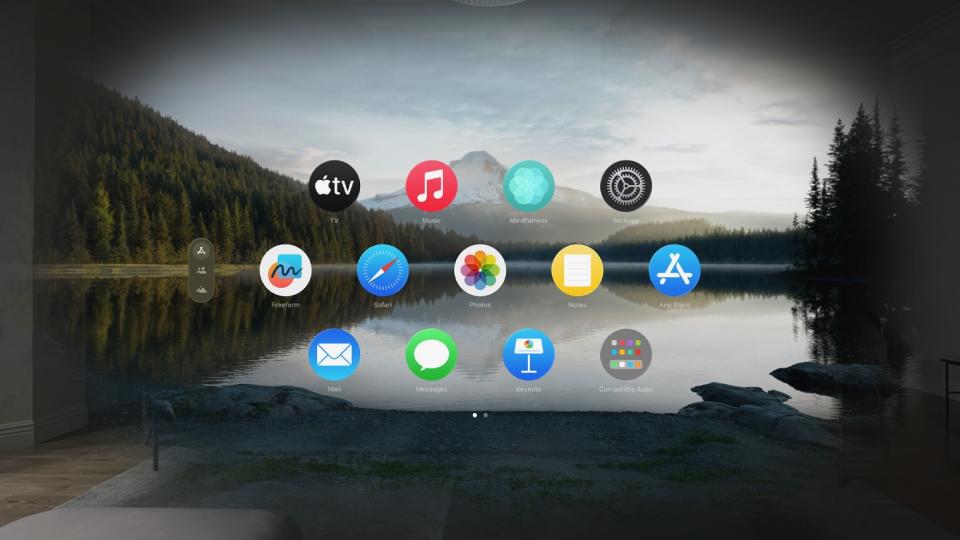
We don't have any other hard information on Samsung XR software, but Google has given us plenty to speculate about. Google has its own hardware plans, and any software leaks could pertain to those. But since Google has to develop Samsung's operating system as well, these software tricks might also apply to Samsung Glasses.
First, an October Google app beta update revealed a buried code string for a Project Iris command: "Just touch & hold the right temple to talk to your Assistant." Iris, for context, refers to the long-rumored codename for Google's own XR project that was supposedly canceled earlier this year.
If Google wants to let you press a button to activate Google Assistant on its smart glasses, we could easily see Samsung offering Assistant or Bixby on its Glasses via a similar shortcut.
Next, a Google patent filed in November showed plans to use a smartwatch as a makeshift touchscreen controller for an XR headset. The device would have a "gesture library" and would use cameras to judge if the user was looking at their smartwatch before accepting commands. You could then open specific apps with gestures, like drawing a "U" to open Uber or a "C" for Calendar.
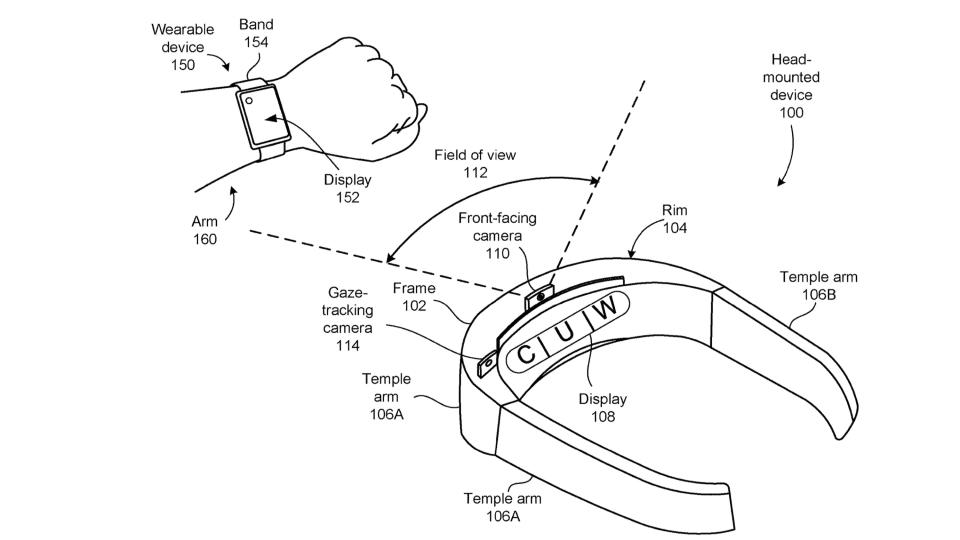
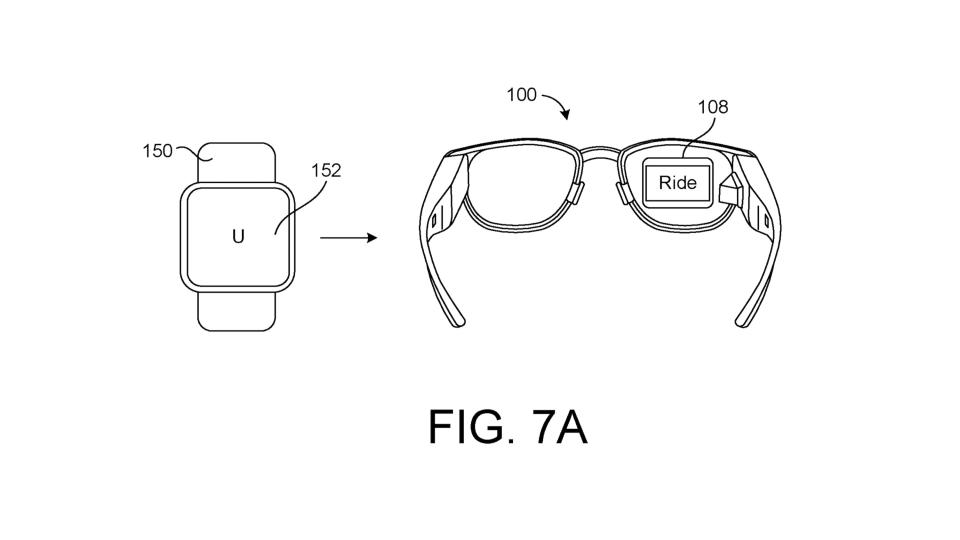

The reference to Uber makes us think this is meant for portable smart glasses, not an indoor productivity headset. And we assumed Google would use the Pixel Watch 2 as its controller. Still, Google could very easily make this kind of technology available for Samsung Glasses, with the Galaxy Watch 6 or Watch 7 as its controller instead.
The aforementioned @Tech_Reve leak suggested that Samsung is "considering adding support for touch and even smell(!)" to its Glasses. We're not really sure if a smell-o-vision gimmick would be especially useful or popular, but a touchpad controller would be useful (and would mesh with Google's smartwatch touch control idea).
Samsung Glasses: Wishlist

If the above leaks are true, the Samsung XR headset will use a 3,000-dpi OLED display, pancake lenses, full-color passthrough similar to the Quest 3, eye tracking, an integrated rear battery pack, hand-tracking controls with an optional touchpad, and a more powerful chipset than the Exynos 2200.
That all amounts to a pretty great baseline to challenge the best XR headsets. Still, based on our time testing other mixed-reality and virtual-reality headsets, we have other hopes and requests for what the Samsung Glasses bring to the table to challenge Apple — especially since it could cost about $2,000.
A strong software launch lineup
One key problem that sunk the Quest Pro was its lack of apps, making it very dependent on the Oculus Browser for working. Meta made partnerships with certain third-party devs that either never panned out or took too long to materialize.
The Apple Vision Pro will have the developer's own first-party apps from the jump, and it's partnered with Microsoft, Disney, Zoom, Adobe, and Zoom for a (seemingly) strong third-party app lineup. Samsung will need to offer something similar.
Specifically, it'll need Google Workspace apps, Microsoft, and other productivity suites to sound compelling, not just its own Galaxy Store apps. Otherwise, no one outside of Samsung superfans will want to spend a couple thousand dollars on one.
A luxurious head strap
The very concept of a productivity headset only works if it's comfortable wearing it for hours a day at a time. Apple wanted to make its headset cool-looking and glasses-like for marketing, but then we found out that the Vision Pro has a secret top strap to better support your weight.
Samsung can take a similar sneaky, "optional" approach when unveiling its Glasses, but it needs a top strap. Mixed-reality headsets have so many cameras and components that they put a lot of pressure on your forehead and back of your head without one. It's a complaint a lot of people had with the strapless Quest Pro, so they couldn't wear it for long.
Top strap aside, we simply hope that Samsung comes up with an overall head strap that's extremely comfortable and works with a variety of head sizes and shapes. Choosing the right materials to rest against your face is important, too.
Powerful, balanced performance
We hope that Samsung will use a robust XR chip like the Snapdragon X Elite to compete with the Apple Vision Pro. But we can't know for certain what it'll do and whether this chip will be able to compete with Apple's M2 and R1 chips. With a $2,000 price tag, the Samsung Glasses will really need to deliver on performance.
It's also important to note that Apple devices typically beat Android devices in benchmarks and that Apple designs its software to work in tandem with its own silicon. Samsung has the challenge of relying on Qualcomm hardware and Google software in its own design; with that many moving parts, it could be tricky to make everything work in equilibrium, an important aspect for any XR headset.
Strong battery life
Apple uses an external battery pack that sits on your belt; despite that, the Vision Pro barely hits two hours per charge. If Samsung intends to match its M2 chip in power while also integrating the battery into the headset, that'll be a challenge.
It's possible that Samsung will end up taking a similar external-battery approach. Whatever it does, it'll need to deliver at least a comparable battery life of two hours, and preferably longer.
Gaming on the side
We understand that the Samsung Glasses specifically target productivity users. But even the most serious worker will download Steam on their laptop, and Samsung's past work on Gear VR makes us hope that it'll incorporate some of its gaming legacy into the headset.
Even though there are plenty of great hand-tracking Quest games, the best experiences rely on controllers. It'd be nice if Samsung sold optional motion controllers to pair with its headsets, specifically for gaming purposes. Since the headset will have cameras and sensors for hand tracking, they would theoretically work just as well for following controller movements.
